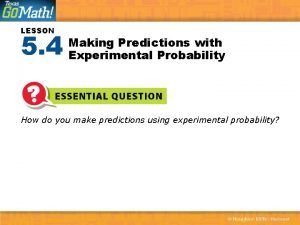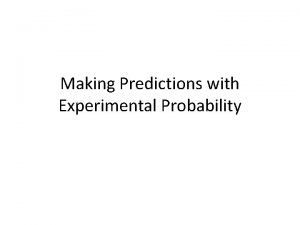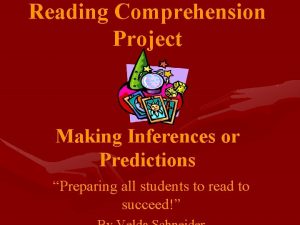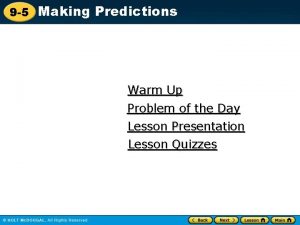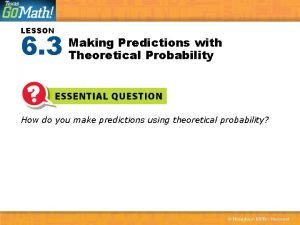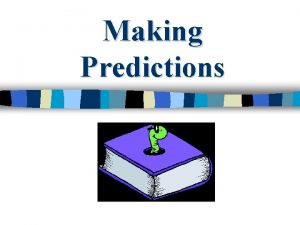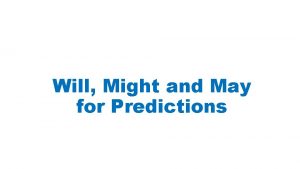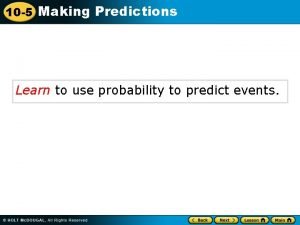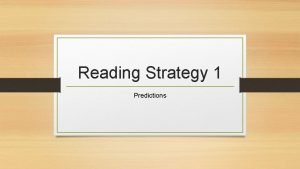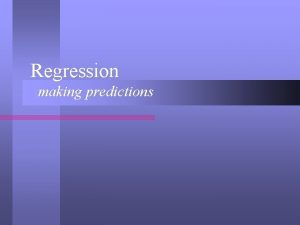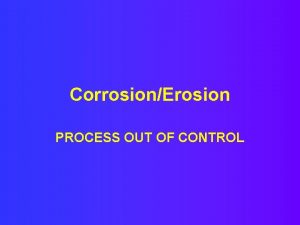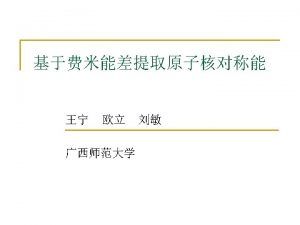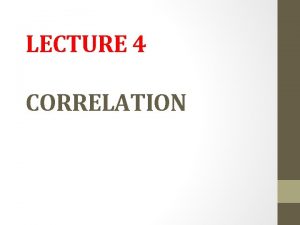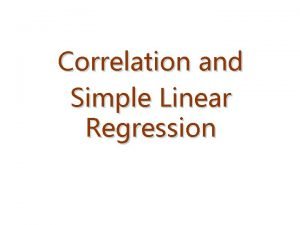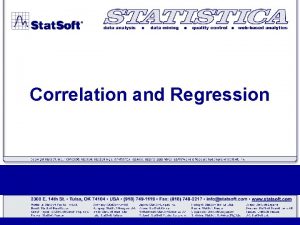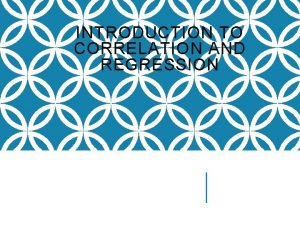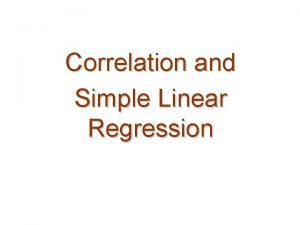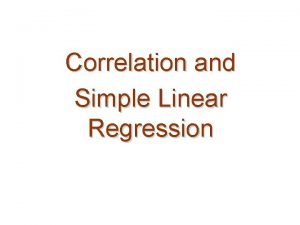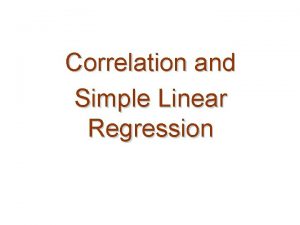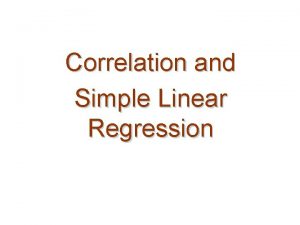Regression making predictions Correlation vs Regression l Corr












- Slides: 12

Regression making predictions

Correlation vs. Regression l Corr. l Association l Two variables l Both free to vary l Single coefficient Reg. Prediction X (IV) & Y (DV) X fixed, Y free Predicted values, Residuals, Strength of model statistics

Correlation vs. Regression l Corr. l Descriptive Reg. Inferential l Regression bridges the gap between descriptive and inferential statistics. l It is related to correlation, but is also used to test hypotheses.

Conceptual Introduction l Linear regression gives us an equation. l The equation describes a line that is the “line of best fit. ” It is the line that best describes the relationship between variables. l Think about shooting an arrow through the scatterplot, so that the arrow passes as close to all the points as possible.



Conceptual Introduction l The “line of best fit”, or the arrow that passes through the scatterplot closest to the points, shows us where our predicted Y values are for given values of X.


Conceptual Introduction l The line is like taking a running mean, or the average of Y for each value of X, and then smoothing it out to make a straight line. l In a sense, our best prediction of Y for a given value of X, is the mean of all the Y values that have the particular value of X in question.


Conceptual Introduction l Remember from algebra, that we describe a line with this equation: l Y = mx + b l In statistics we say: l Y = b 0 + b 1 x 1 + e l Ypred = b 0 + b 1 x 1 where: b 0 = Y intercept b 1 = Slope

Perceived Stress = 67. 651 - 7. 238(Perceived Control) + e Predicted Perceived Stress = 67. 651 - 7. 238(Perceived Control)
 Positive correlation versus negative correlation
Positive correlation versus negative correlation No correlation gif
No correlation gif Making predictions with experimental probability
Making predictions with experimental probability Reading comprehension making predictions
Reading comprehension making predictions How is experimental probability used to make predictions
How is experimental probability used to make predictions Prediction vs inference venn diagram
Prediction vs inference venn diagram Making predictions quiz
Making predictions quiz Make predictions using theoretical probability
Make predictions using theoretical probability Good readers make prediction by
Good readers make prediction by Prediction will might
Prediction will might Making predictions with probability
Making predictions with probability Making predictions ppt
Making predictions ppt What is this font
What is this font


